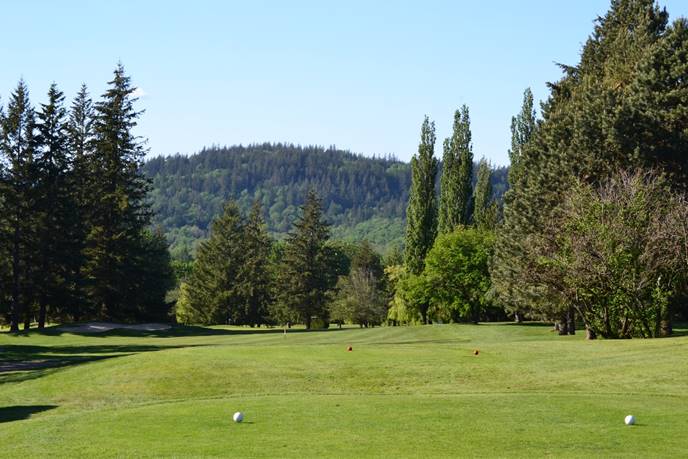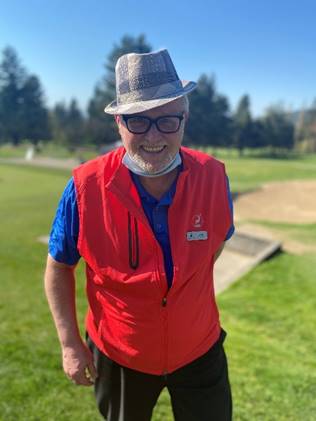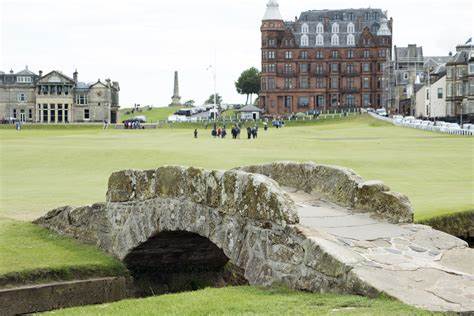
The golf industry is obsessed with surveys and lists, the longer, and more bizarro, the better.
What is the best course in Canada: St. George’s, Shaughnessy, or Royal Montreal? The prettiest: Cabot Links or Capilano? Which one makes the best burger and fries at its halfway house? Which one in southeastern Saskatchewan offers the top left-handed club rentals?
Send out a survey, run the numbers, scramble together a team of so-called industry experts, hold a vote, publish a Top 10 or Top 50 list, and juice it up with a few social media teasers.
In the end, it doesn’t matter, as the results are too subjective, too unscientific, and wide open to criticism. An hour after a reader gorges on it, it will be forgotten (like eating a plate of kale), and golf addicts will be hungry for more.
But there is one unneeded survey/list: Which municipal course in Canada has produced the most top-notch pro players, world-class amateurs, or former PGA and Senior Tour stars?
The answer: Ledgeview Golf Club in Abbotsford, B.C.

It has spawned two current Tour winners, Adam Hadwin and Nick Taylor, a former amateur wunderkind, James Lepp (first-ever NCAA champion, all-American, and medalist at the 2005 U.S. Amateur), and if we reach further back, Ray Stewart, former PGA Tour player, member of Canada’s Dunhill Cup team, who enjoyed a few cups of coffee on the senior pro circuit.
What’s amazing about this is that Ledgeview isn’t a golf factory, or home to a world-famous academy, or an A+ layout. It’s a piddling 6131 yards, and has a course rating that wouldn’t scare even a high handicapper. Just a few years ago, its membership rolls were shrinking, and the clubhouse had burned down. It was unclear whether either could be rebuilt.

Ledgeview’s tee sheets are jammed today, ditto its membership list, and its clubhouse is state-of-the-art, newly built.
The great irony is that the unintended consequences of Covid and climate change have immunized it against failure and fueled future prospects.
Ledgeview is a muni-hybrid: city owned, but run by a non-profit society, and hurtles into forward under director of golf, Gerry Hadwin.
He is one of the industry’s engaging storytellers, a 43-year veteran of the business, working in all sectors in nearly every province, from Ontario to Saskatchewan to B.C. He is the father of Adam, a two-time Presidents Cup player.
The elder Hadwin is the go-to person when it comes to asking the eternal question: Why has Ledgeview produced so many world-class players?

“To be honest, I don’t have an answer,” he told Pro Shop Magazine in a recent interview. “People are always asking me, ‘Is there something in the water here?’ I don’t know. It’s unexplainable.”
What is explainable is how “muni’s” are again playing a vital role in the game’s revival – a curious turnaround since over the past few years they have been targeted for closure/downsizing right across the country.
Three major cities – Toronto, Calgary and Vancouver – are currently doing studies and openly question their viability – financial and/or societally.
A recent case-study shows the pressure-points and is taking place in Brantford, Ontario, the fabled hometown of No. 99, Wayne Gretzky. Thousands of residents are resisting the sale of municipally owned Arrowdale Golf Course. They recently ringed the facility, carrying placards, signing a petition, and letting their interests (and anger) be known on Facebook.

The city stopped operation last year and has a deal to sell 32 acres to Elite M.D. Developments for $14 million. It says it will use the proceeds to erect affordable housing. The sale is on hold pending a court decision. The City also issued a letter explaining its Corporate Climate Change Action Plan, detailing a “sustainable and clean future.” It’s determined to be carbon-neutral by 2050, hitting net-zero in CO2 emissions. This is doable and desirable, it says, but how it squares this goal with selling-off some of its greenery is anyone’s guess.
A U.S. jurisdiction is taking the opposite approach. Washington, D.C. says it is making a huge golf investment with its three muni’s. This rehabilitation is a “once-in-a-generation opportunity to align with the National Links Trust, that fixes national treasures and pushes the benefits of restoration.” The U.S. capital wants to answer the question: “What municipal golf can and should be.”
Alberta is home to the oil sands, an unparalleled polluter. The province is also a poster child for how climate change can devastate communities. In 2015, fires nearly destroyed Fort McMurray, and two years earlier, floods ravaged Calgary and two iconic golf courses at the Kananaskis resort. It cost taxpayers millions to restore the golf site after snow melt and 100-year rainfall nearly washed it away.
A UN Report on Global Warming urges urban policy makers to accelerate ecosystem-based adaptation and use nature to sequester carbon in their cities. What better way to do this than through municipally owned golf courses. A game that once elicited little scrutiny from politicians, or ecologists, is now a major player in the clean and green movement.
The United States has 2 million acres of municipal golf courses, and Canada (using the 10-to-1 ratio) was also all-in. Torontois now looking to determine “the best model for golf service delivery” for its seven courses over the next 20 years.
Charles Montgomery, author of Happy City: Transforming Our Lives Through Urban Design, has weighed in on the future of the multiple muni’s in Vancouver, and thinks it needs to re-evaluate their value. One member of a pro-density, anti-municipal course advocacy group, invoked the tired old bromide about private club elitism, applying it to these clubs. “Reserving six very large pieces of public land for nothing but 500 or 600 people a day…seems a little ridiculous in this environment.”
Margaret Kohn, a University of Toronto professor specializing in urbanism and public space, said cities should ask themselves two questions about public land: Does it serve citizens who are unlikely to have easy access to public recreation space, and can the space be used for multiple purposes?
Perhaps the future of muni’s can be found where the game began, in Scotland. Earlier this year, the R&A, overseer of the game in Britain, dipped its toe into community golf club/facility ownership by submitting a planning application to Glasgow City Council for the construction of a new community golf development. It hopes to open in 2022, costing £10 million. It will redevelop the existing public course at Lethamhill to create family-focused access to a nine-hole, Par 3 course, putting greens, short-game area, adventure golf and a 25-bay floodlit driving range.

The hope is to make the game more welcoming and inclusive for people of all ages and backgrounds. One Glasgow councillor called this a great example of innovative thinking to protect and enhance city resources.
Scots invented golf, and now look like they’re re-inventing it, or turning it back on its head, which began at St. Andrews in our misty pre-history. It was the first muni.
In the Golf Facilities Report (2017), a co-production of Golf Canada, and PGA Canada, it highlighted the increased pressure on public golf courses in major urban areas. It concluded that soaring real estate valuations, rising costs and lowering revenues, was causing a crisis in the game – for club owners and players alike.
Toronto’s full-scale review of its muni courses is driven by “rising maintenance costs” and a “declining interest in the sport.” It hopes to determine “the best model for golf service delivery” over the next 20 years. It said it needs about $10 million to modernize its muni’s, and, considering the numbers of rounds played fell by 15 per cent between ‘07 and ’16, it looked like a diminishing return on investment. But that was before Covid, and the game’s recent revival.
So, where does Toronto, or other cities go from here? Vancouver and Calgary are reviewing their golf portfolios, and the former has a 25-year plan for public parks, including its six public courses. They are spread over 200 hectares, half the size of Stanley Park. Are taxpayers subsidizing something that only affluent people are tapping into?
The health benefits (physical and mental) of municipal courses are now a given – escape hatches for COVID-19 shut-ins. It’s now next to impossible to get a tee time at any muni in Toronto, Calgary or Vancouver. Muni’s are now viewed as green stewards – protection against the evils of urbanization, and cities that make lousy land-use decisions. Golf and eco-warriors are partners in hitting targets to reduce CO2 (greenhouse gas) levels. Are muni’s now the lungs of our communities?
In a recent issue of GreenBiz, it suggests legislators “help cities reinvest in retrofitting existing municipal and public golf courses.” The UN ‘Sports for Climate Change Framework,’ adds that sports can combat climate change through “commitments and partnerships according to verified standards including measuring, reducing and reporting greenhouse gas emissions.”
Even golf’s minimalist movement (“brown is the new green”) tries to cut back on the over-use of water, fertilizers and chemicals. It wants courses to let nature do its thing – grow wild in non-playing areas. This folds nicely into the green movement.
No one loves muni courses more than Ledgeview’s Gerry Hadwin. Two weeks after he started his current job, the course’s clubhouse burned down, and so had the membership roll. But the place where son Adam honed his world-class skills has now bounced back big-time.
Still, St. Andrews remains the game’s ancestral home, and the recent initiative to put its money (£10 million) where its good intentions are, comes from the offices of the R&A, located on site. That means golf’s home remains the driver of the game, spinning the dial back to holistic and egalitarian roots.
There’s no need to hold a survey or pick which is the world’s best and most influential muni. St. Andrews continues to build its bona fides as the model of public courses everywhere. It’s the course designed by Mother Nature herself.











